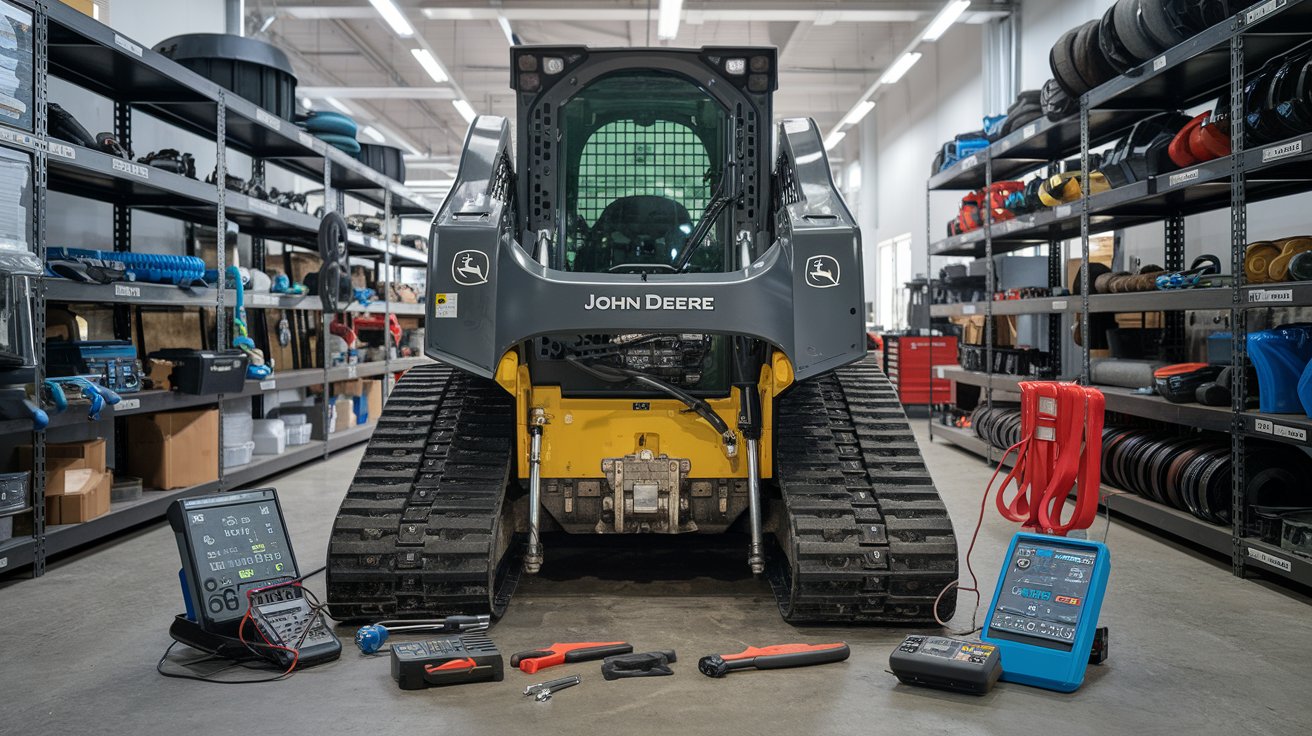Keeping your John Deere 333G Compact Track Loader in peak condition is essential for maintaining productivity and avoiding costly downtimes. However, like any heavy equipment, the 333G can face challenges that leave operators scratching their heads. In this article,
we’ll dive into some of the most common problems faced by John Deere 333G owners and provide actionable solutions to keep your machine running smoothly.
Why Regular Maintenance Is Crucial
Routine maintenance prevents minor issues from escalating into significant problems. Whether it’s engine trouble, hydraulic system failures, or electrical hiccups, early detection and troubleshooting save time and money in the long run.
Common John Deere 333G Problems and Their Fixes
1. Hydraulic System Issues
Problem: Hydraulic Leaks
Leaking hydraulic fluid can lead to reduced machine performance and environmental hazards.
Cause:
- Damaged hydraulic hoses or fittings.
- Worn-out hydraulic seals.
Solution:
- Inspect hydraulic hoses and connections for visible damage.
- Replace worn-out or cracked hoses.
- Tighten or replace faulty fittings.
- Use high-quality hydraulic oil to maintain optimal system performance.
Problem: Auxiliary Hydraulics Not Working
Operators often report that the auxiliary hydraulic system fails to function as expected.
Cause:
- Clogged hydraulic oil filter.
- Low hydraulic fluid levels.
Solution:
- Check and replace the hydraulic oil filter regularly.
- Top up hydraulic fluid to recommended levels.
- Inspect and clean auxiliary hydraulic ports to ensure proper flow.
2. Engine Problems
Problem: Starting Issues
A common issue with the John Deere 333G is difficulty starting, particularly in cold weather.
Cause:
- Low battery voltage.
- Clogged fuel filter.
Solution:
- Test the battery with a multimeter and replace it if voltage is below recommended levels.
- Replace the fuel filter to prevent clogging.
- Use a block heater during colder months to aid engine starting.
Problem: Engine Overheating
Overheating can cause serious damage if not addressed promptly.
Cause:
- Dirty radiator or cooling fins.
- Low coolant levels.
- Faulty thermostat.
Solution:
- Clean the radiator and cooling fins to improve airflow.
- Check coolant levels and refill as needed.
- Replace the thermostat if it’s not functioning properly.
3. Electrical System Challenges
Problem: Electrical Failures or Malfunctions
Electrical issues can range from flickering lights to complete system shutdowns.
Cause:
- Corroded battery terminals.
- Damaged wiring or loose connections.
Solution:
- Inspect and clean battery terminals to remove corrosion.
- Check wiring for damage and replace if necessary.
- Tighten loose connections to ensure a stable electrical flow.
4. Transmission Troubles
Problem: Transmission Failure
Transmission problems can lead to difficulty shifting or loss of power.
Cause:
- Low transmission fluid.
- Worn-out gears or clutches.
Solution:
- Check and refill transmission fluid.
- Inspect gears and clutches for wear and replace if needed.
- Schedule regular transmission servicing to avoid severe damage.
5. High Flow Issues
Problem: Reduced Power in High Flow Operations
High flow hydraulics are crucial for attachments like mulchers and trenchers. Reduced power can hinder performance.
Cause:
- Blocked high flow filter.
- Insufficient hydraulic fluid pressure.
Solution:
- Clean or replace the high flow filter.
- Check hydraulic pressure levels and adjust as necessary.
- Consult the operator’s manual for troubleshooting specific high flow attachments.
Proactive Maintenance Tips
- Inspect regularly: Conduct visual inspections of key components weekly.
- Follow the manual: Adhere to the maintenance schedule outlined in the operator’s manual.
- Use genuine parts: Always replace parts with OEM-certified components to ensure compatibility and durability.
- Monitor performance: Stay alert to unusual sounds, smells, or performance drops.
Frequently Asked Questions (FAQs)
Why does my John Deere 333G not start?
Starting issues in the John Deere 333G are often caused by low battery voltage, clogged fuel filters, or extremely cold weather. Test the battery with a multimeter, replace the fuel filter, and use a block heater during cold conditions.
How can I fix hydraulic leaks in my John Deere 333G?
Inspect the hydraulic hoses and connections for visible damage. Replace any cracked hoses or worn-out seals, and ensure all fittings are tightened properly. Using high-quality hydraulic oil can also help prevent future leaks.
What should I do if my John Deere 333G engine overheats?
First, check and clean the radiator and cooling fins. Ensure coolant levels are sufficient and replace the thermostat if necessary. Always monitor engine temperature during operation to prevent overheating.
Why is my John Deere 333G losing power in high flow operations?
Reduced power in high flow operations is often due to a clogged high flow filter or insufficient hydraulic fluid pressure. Clean or replace the filter and ensure the hydraulic system pressure is within the recommended range.
How often should I service my John Deere 333G?
Follow the maintenance schedule provided in the operator’s manual. Regularly check fluids, filters, and key components to ensure optimal performance and longevity.
Conclusion
The John Deere 333G Compact Track Loader is a reliable and versatile machine, but like any equipment, it requires regular upkeep and timely repairs. By addressing issues like hydraulic leaks, engine starting problems, and electrical malfunctions promptly, you can ensure your machine remains a productive asset on the job site.
For more detailed troubleshooting or professional repairs, consult a certified John Deere technician. Regular maintenance and proactive care are the keys to maximizing the lifespan of your 333G. Stay vigilant, and keep your machine running smoothly for years to come!

